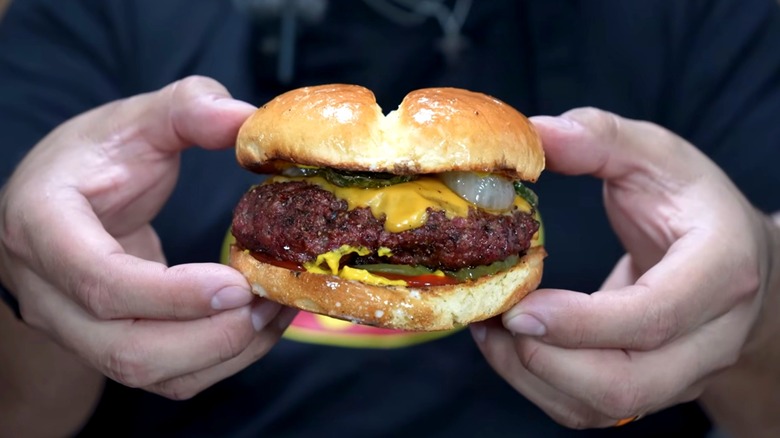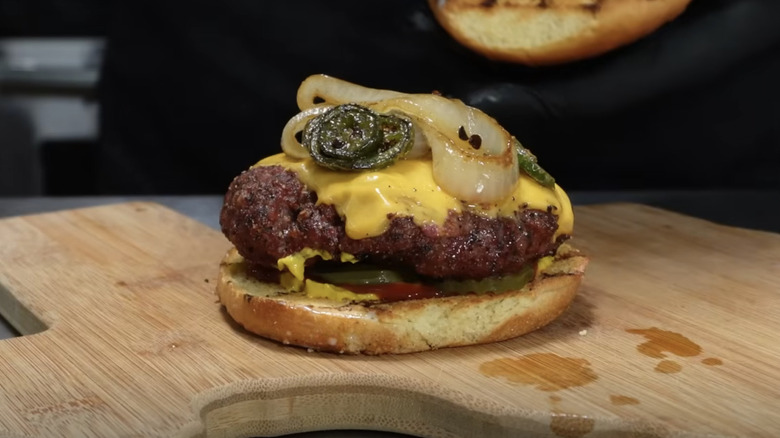At What Temperature Are Brisket Burgers Done?
Often used in premium burger blends, brisket provides much of the flavor in a patty. When blended with other types of meat, you can cook a burger anywhere from medium to well-done, but David Davidov, creator of The Cooking Foodie, tells Food Republic that a 100% brisket burger requires different treatment.
"Brisket has great flavor but less fat compared to chuck, so it dries out more easily," Davidov says. He recommends cooking it to 145 to 150 degrees Fahrenheit for a medium cook. "Don't go above that unless you've blended it with a fattier cut like short rib or chuck," he adds. Ground meat contracts as it cooks, squeezing out its juices. While a thumbprint can easily prevent your burgers from turning into meatballs, the only way to preserve your patty's juices is to tailor your cooking to the specific needs of your blend.
By cooking a brisket burger to no more than medium doneness, you can achieve a great sear on the outside without drying out its interior. Plus, Davidov is a big proponent of always allowing the patties to rest for a few minutes before serving, ensuring that juices redistribute throughout the meat rather than dripping out after the first bite. While there are plenty of rules for grilling burgers like a pro that may help maintain great juiciness for other blends, you must treat all-brisket burgers with the utmost care for a perfect result.
The best way to cook a juicy brisket burger
Brisket meat, particularly ground varieties from the flat of the cut, is pretty unforgiving if overcooked. Much like when you smoke a brisket flat, cooking a ground patty from either the flat or point requires substantial temperature control to guarantee a delicious result.
"Reverse searing works beautifully for brisket burgers — it lets you control the doneness and finish with a perfect crust," says David Davidov. By gently bringing the whole patty to temperature, the interior stays nice and moist while the exterior dries, priming it for the perfect crust. Once it reaches 145 degrees Fahrenheit, it's ready to be dropped into a piping hot skillet. Not only is this method relatively easy, but it guarantees the best of both burger worlds: a perfect Maillard exterior and a juicy, dripping center.
"I also like pan-frying in cast iron over smashing," Davidov continues. "Smashing forces out too much juice, which is a waste with a flavorful cut like brisket." Whether you're on team smash burger or regular burger, most brisket blends don't have the fat required for smashing unless they're ground solely from the cut's point. Pan-frying, however, allows you to use additional cooking fat like oil or butter, helping develop a good crust while keeping your burger a bit more moist.


